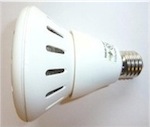Dishwasher
Look for products with energy efficient motors, controls systems that features effective cleaning action, sensors to manage cycle times and water temperature. Run the dishwasher only when it is full, use as light a setting as possible, and air dry the dishes.
The operation efficiency of a dishwasher can be enhanced by managing the hot water used by the dishwasher. A dishwasher draws hot water from household hot water source, whether it is storage tanks or tankless. Often the hot water source is not located next to the dishwasher. Furthermore, the hot water draws come intermittently with the cycles of the dishwasher actions. To ensure the hot water in the hot water pipes does not cool off considerably between the cycles, insulate well these pipes. This will reduce the heat loss in the pipes and also reduces the need to reheat the water in the dishwasher. A dishwater may use up to 90% of the energy in heating up the water. Keep the hot water tank’s temperature just high enough to meet the requirement of the dishwashers as documented in the dishwasher’s operations manual.
Clothes Washer
Front load machines generally use 40% less water than top load machines. A typical front load machine uses about 20-25 gallons of water per wash. Front load machines are more gentle on the clothes because of the tumbling mechanism instead of the agitators in top load machines. They are also more energy efficient. However, some manufacturers are designing top load models with improved agitators that are approaching the energy and water efficiency of front load models. Check the products out carefully.
Models with fast spin cycles remove more water from clothes. This will reduce the amount of heat required from the clothes dryers. Look for models that use less amount of water.
Use the correct type and amount of detergent. Excessive detergent creates bubbles that causes the washer to work harder. Use cold water whenever possible.
Clothes Dryer
There is basically only one design for clothes dryer, so there is little energy performance difference from a design perspective. However, running the dryer on medium heat rather than high heat is usually more efficient in energy usage. High heat does not remove moisture much more quickly so part of the heat is wasted. Clothes dry well with a good steady flow of warm air. The cost of running the blower a little longer with medium heat cycle is less than the heat waste with high heat cycle.
Some Useful Resources
- Green Remodel Forum – Our own list of resources
- Energy Star – EPA’s standard and certification
- CEE – Consortium of Energy Efficiency
- Consumer Report
- Top Ten USA
- Consumer Research







